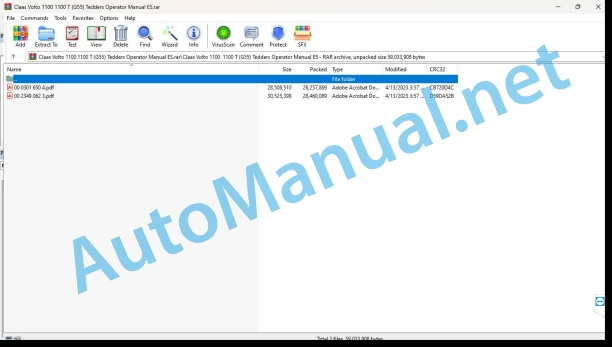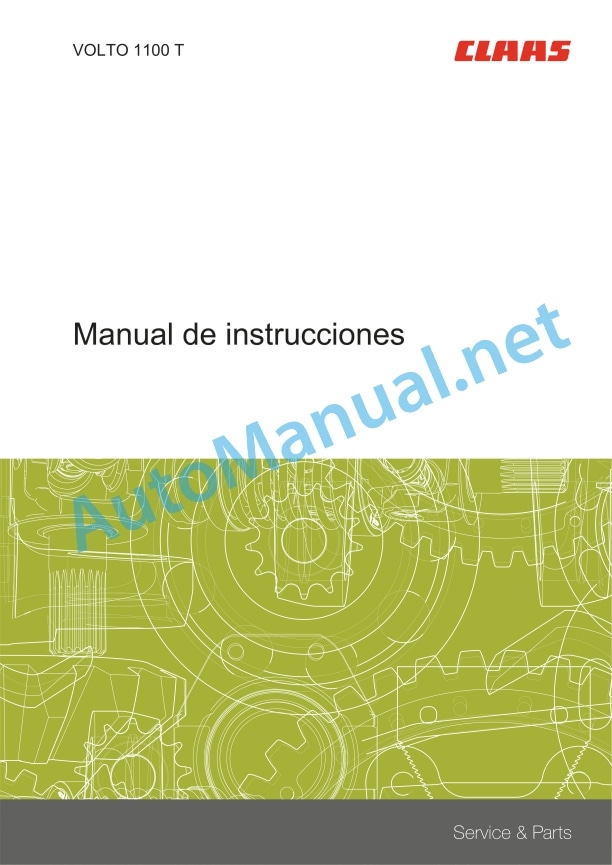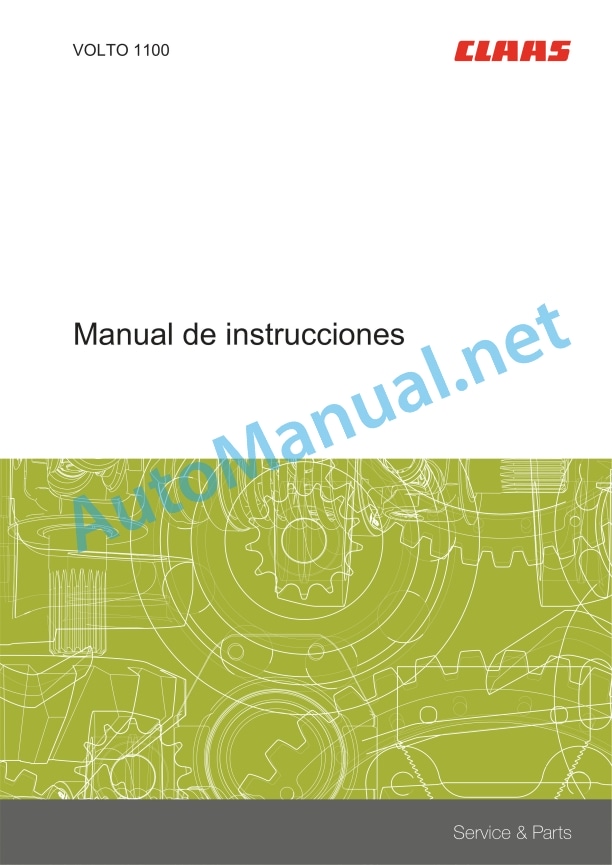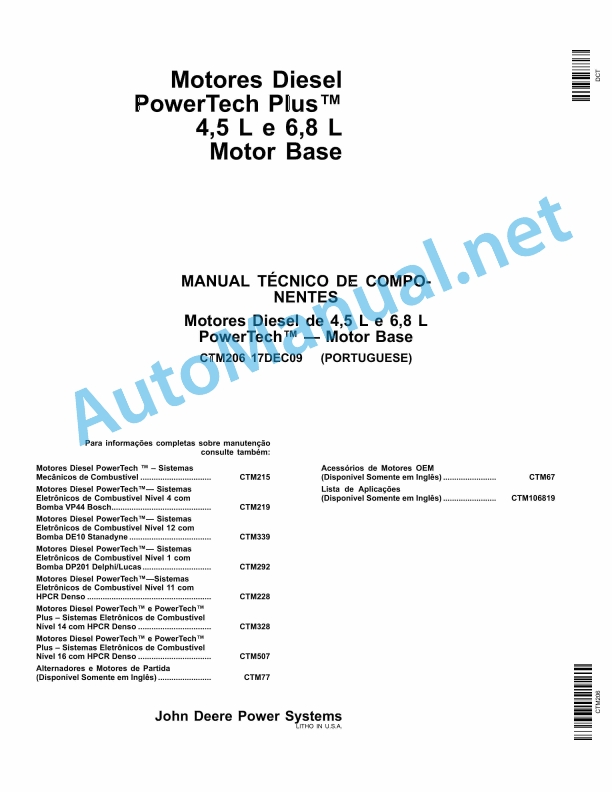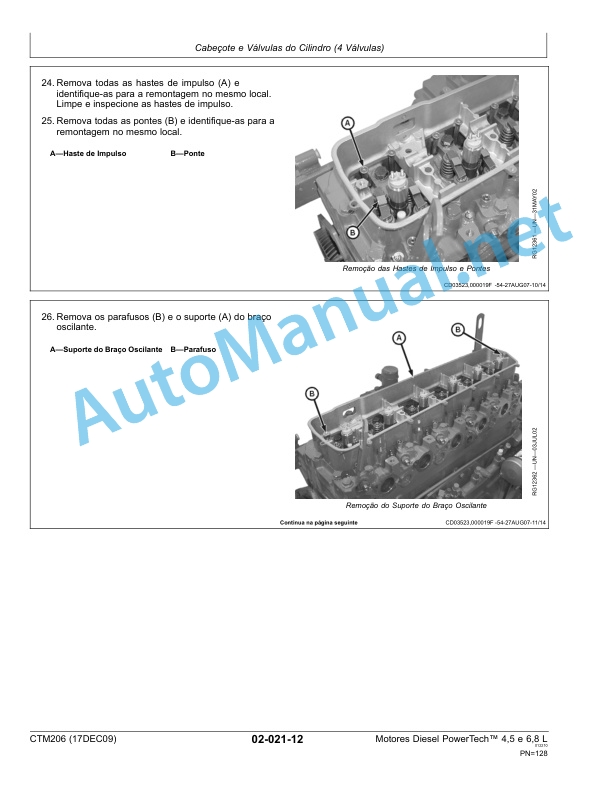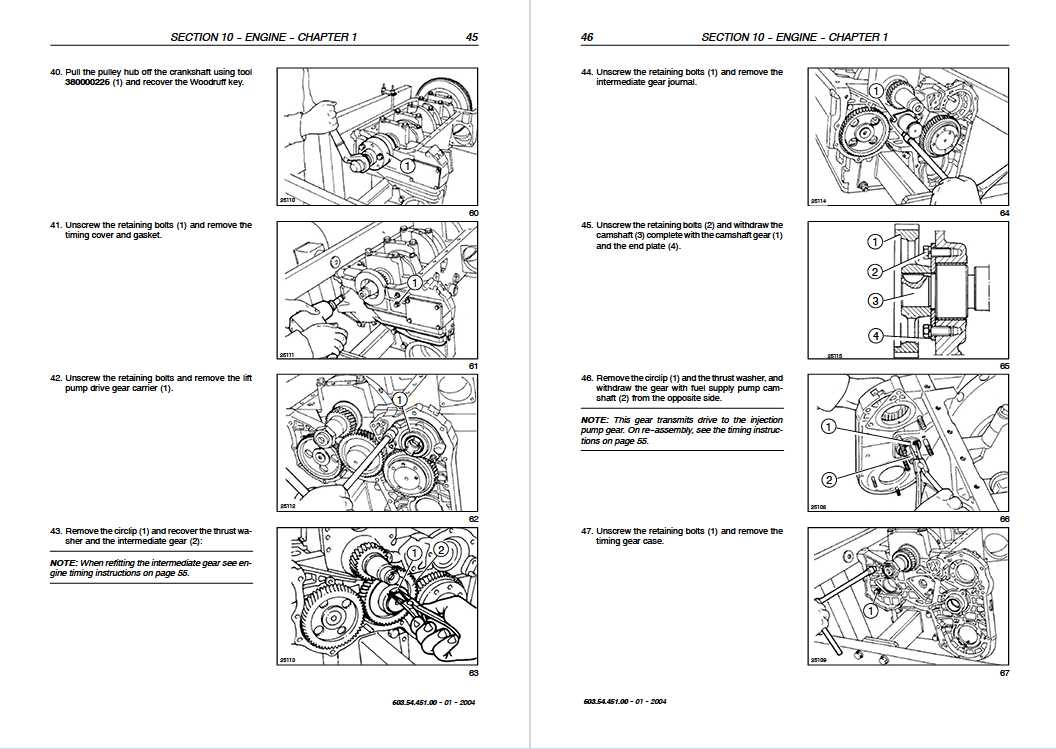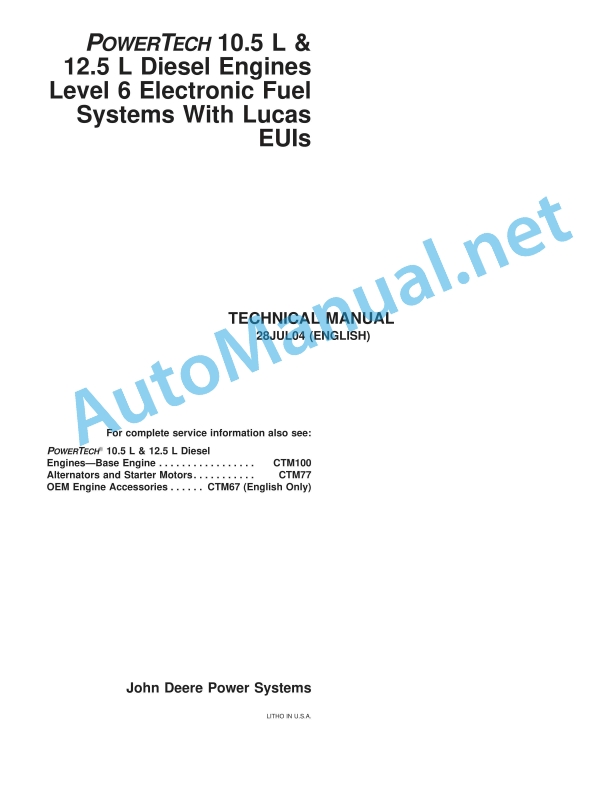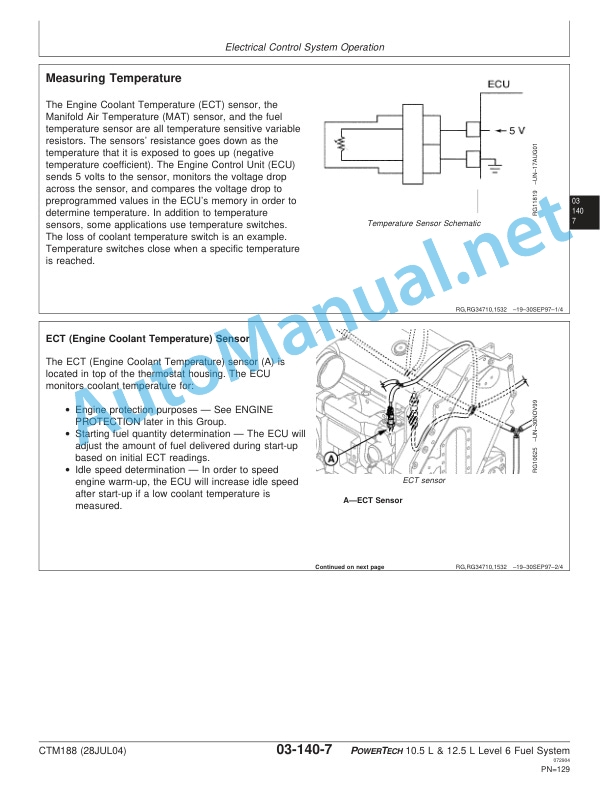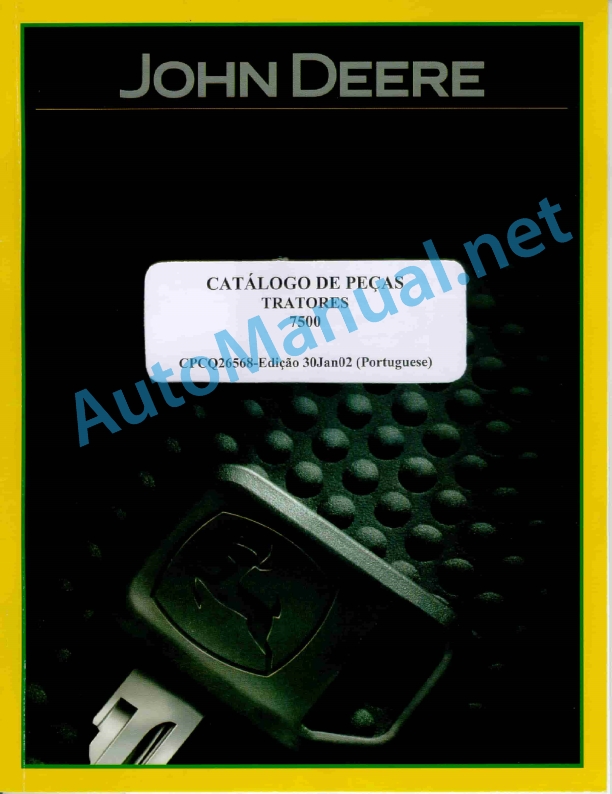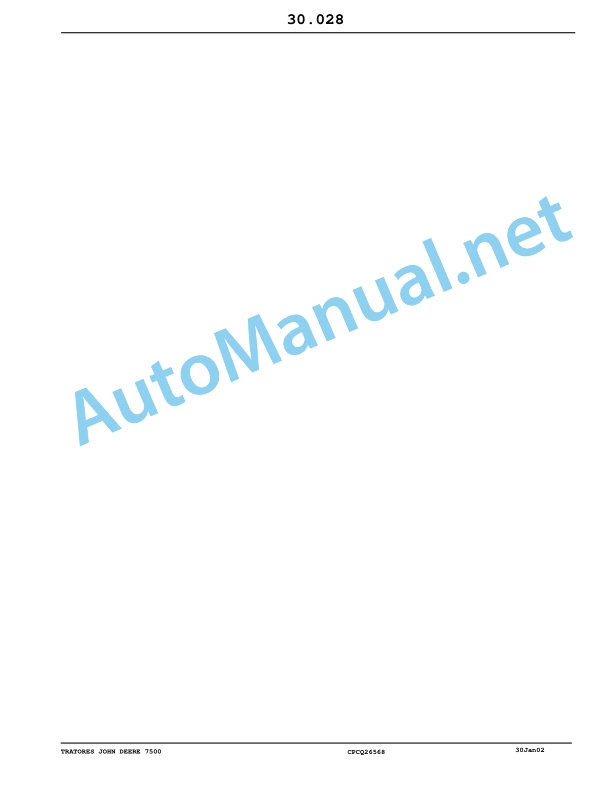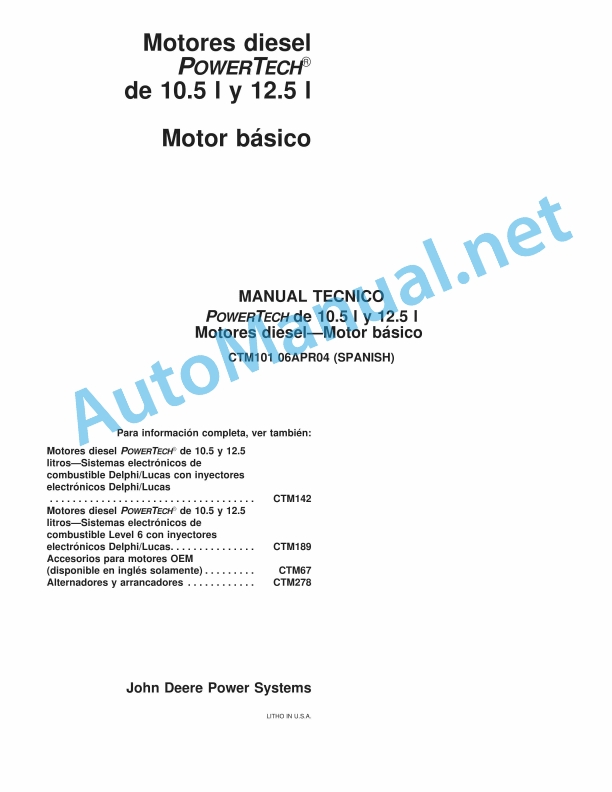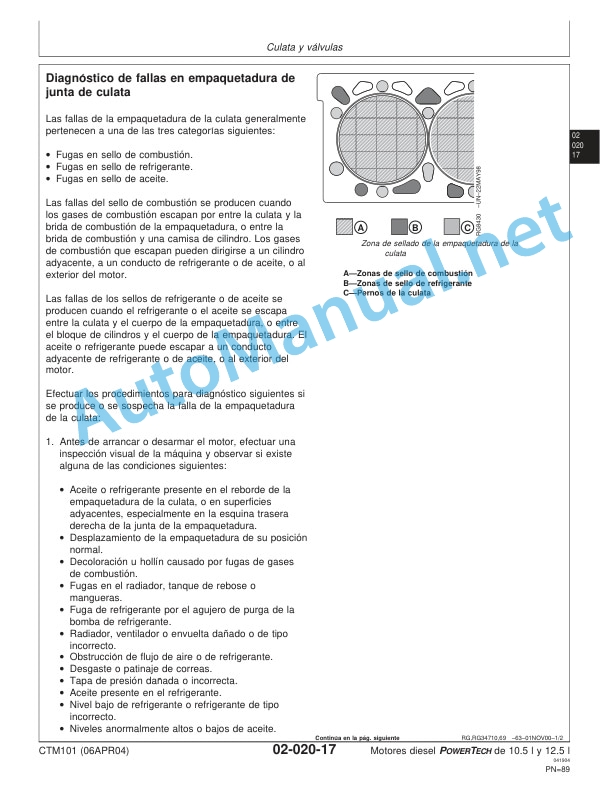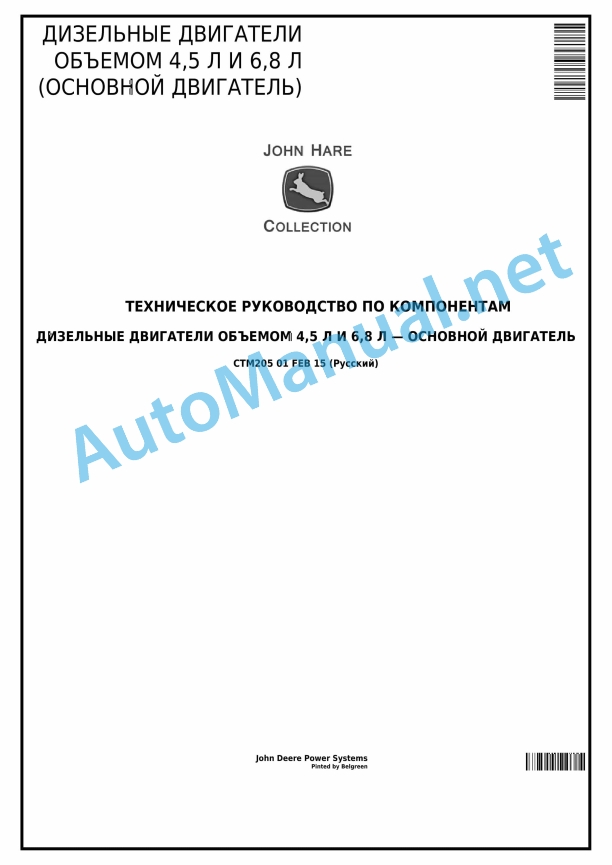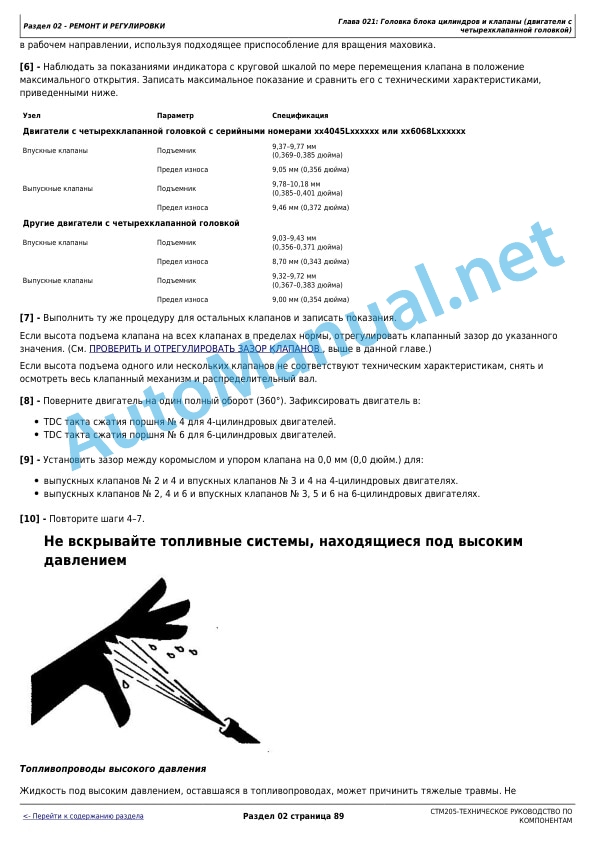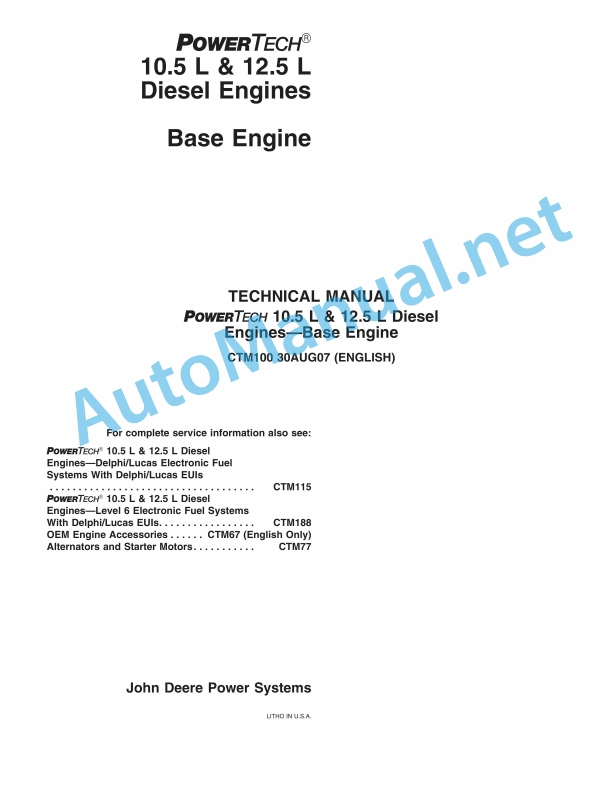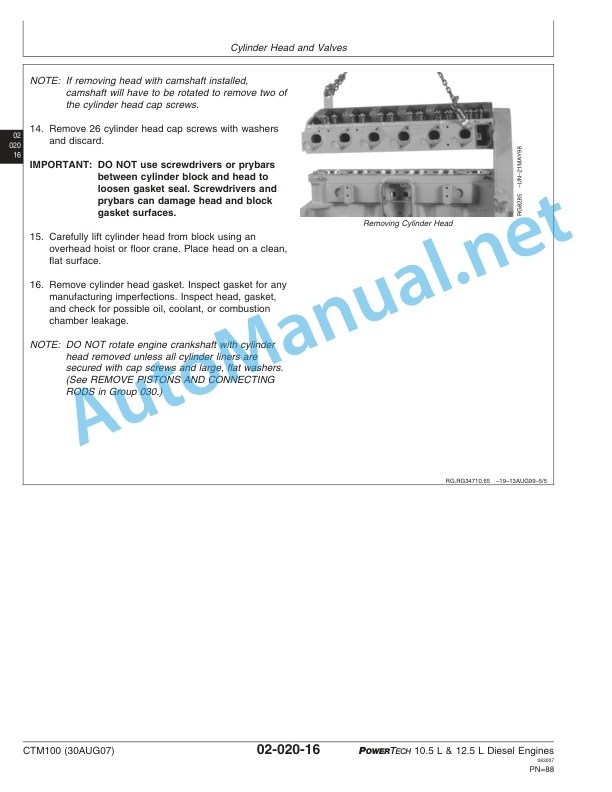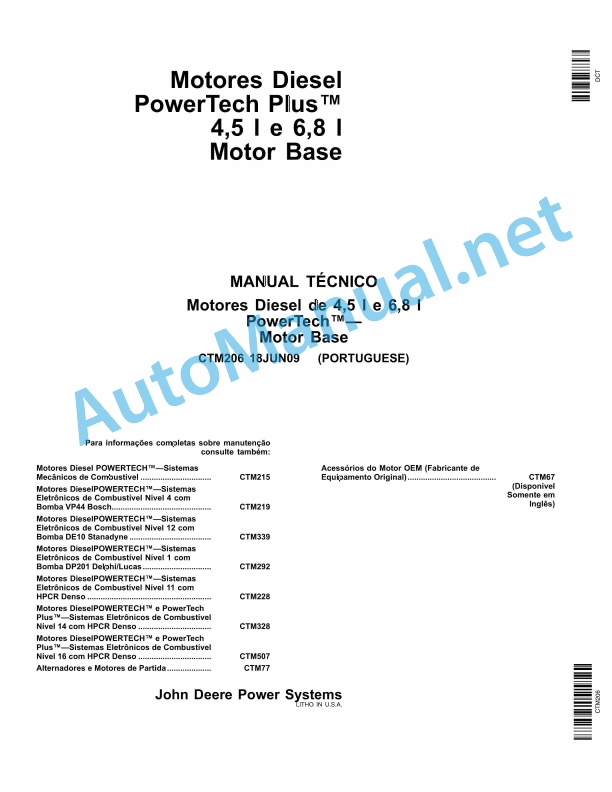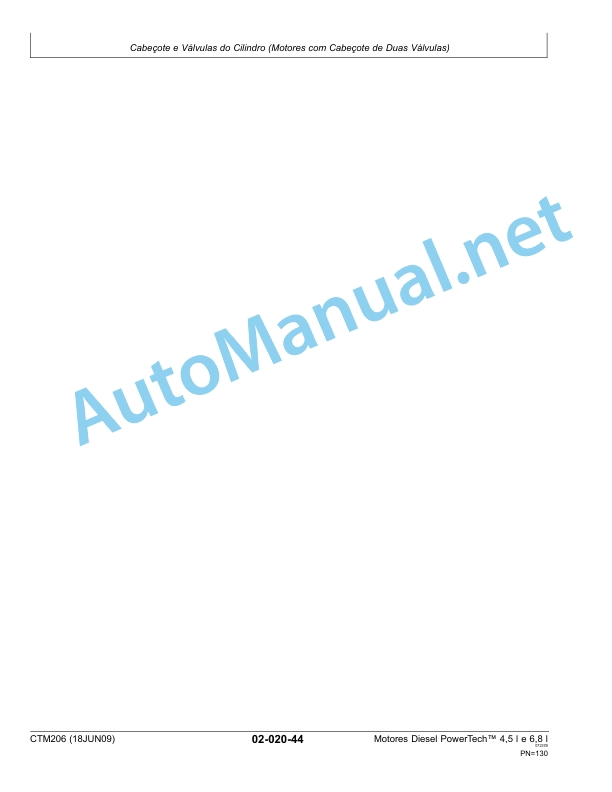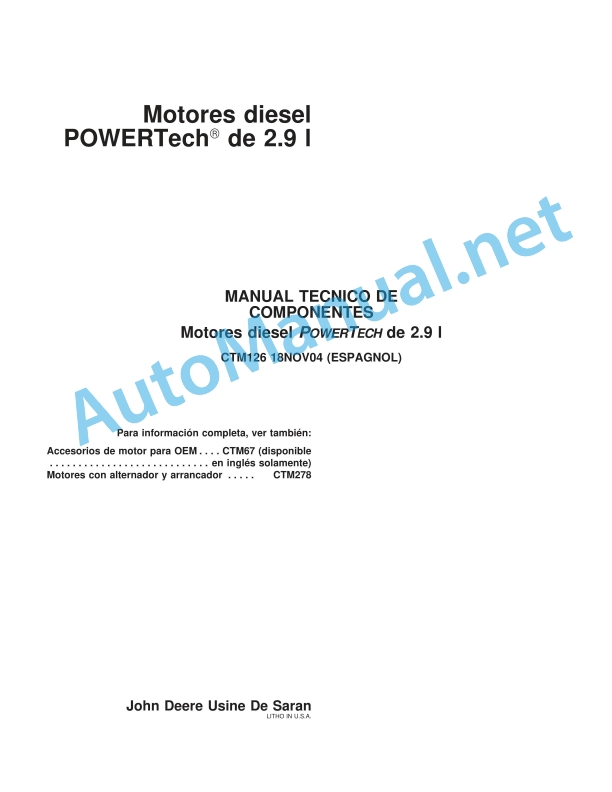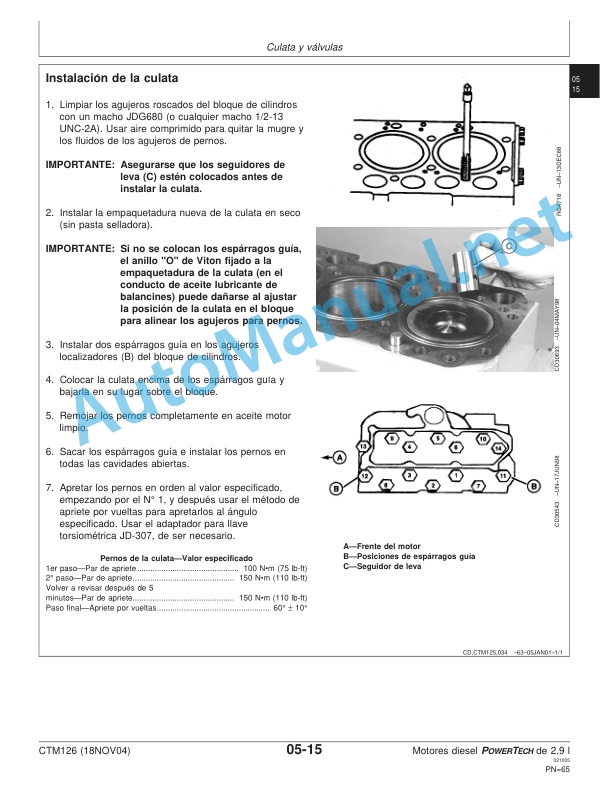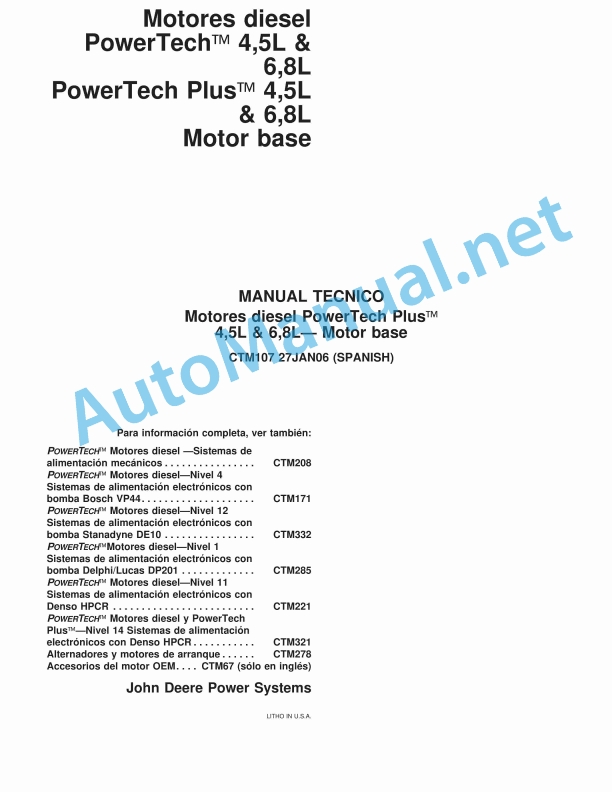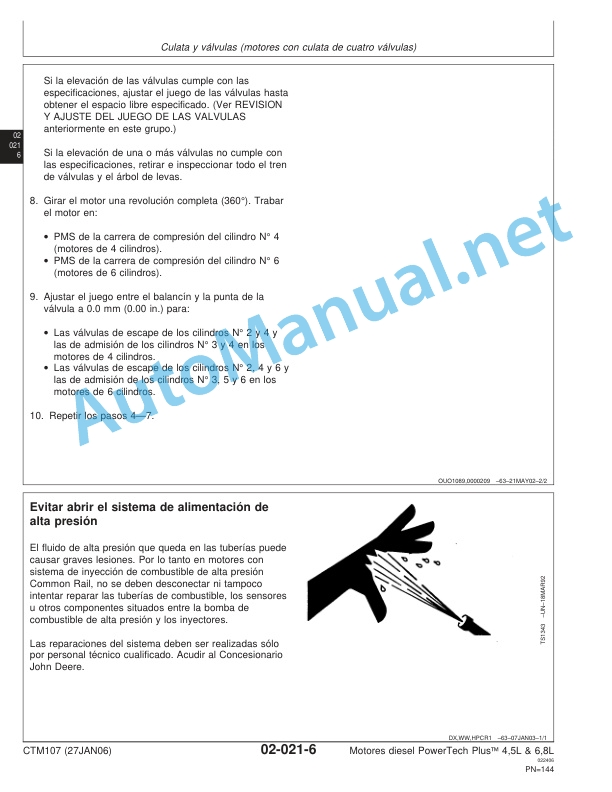Claas Volto 1100 1100 T (G55) Tedders Operator Manual ES
$50.00
- Model: Volto 1100 1100 T (G55) Tedders
- Type Of Manual: Operator Manual
- Language: ES
- Format: PDF(s)
- Size: 52.2 MB
File List:
00 0301 650 4.pdf
00 2349 062 3.pdf
00 0301 650 4.pdf:
VOLTO 1100 T
1. Introduction
1.1 Information regarding the instruction manual
1.1.1 Validity of the manual
1.1.2 Information about this instruction manual
1.1.3 Symbols and indications
1.1.4 Optional equipment
1.1.5 Qualified specialized workshop
1.1.6 Maintenance instructions
1.1.7 Information regarding warranty
1.1.8 Spare parts and technical issues
1.2 Proper application of the machine
1.2.1 Proper machine application
1.2.2 Logically foreseeable inappropriate application
2 Security
2.1 Recognize warning signs
2.1.1 Danger symbols
2.1.2 Keyword
2.2 Safety instructions
2.2.1 Meaning of the instruction manual
2.2.2 Observe graphic danger symbols and alarm indications
2.2.3 Requirements for all people working with the machine
2.2.4 Children in danger
2.2.5 Danger zones
2.2.6 Position yourself between the tractor and the machine
2.2.7 Accompanying persons
2.2.8 Couple the tractor with the machine
2.2.9 Risk of injury due to rotating shafts
2.2.10 Construction modifications
2.2.11 Optional equipment and spare parts
2.2.12 Control of the machine in operation
2.2.13 Use only after correct start-up
2.2.14 Technical status
2.2.15 Danger due to machine breakdowns
2.2.16 Comply with technical limit values
2.2.17 Danger due to coasting parts
2.2.18 Maintain functional protection devices
2.2.19 Personal protective equipment
2.2.20 Wear appropriate clothing
2.2.21 Remove dirt and loose objects
2.2.22 Prepare the machine for road traffic
2.2.23 Dangers when driving on the road and in the countryside
2.2.24 Park the machine safely
2.2.25 Parking without supervision
2.2.26 Unsuitable consumables
2.2.27 Safe handling of consumables and auxiliary materials
2.2.28 Environmental protection and waste disposal
2.2.29 Fire protection
2.2.30 Deadly electrical discharge through overhead lines
2.2.31 Liquids under pressure
2.2.32 Hot surfaces
2.2.33 Work only on the stopped machine
2.2.34 Maintenance work and repair work
2.2.35 Machine parts and lifted loads
2.2.36 Danger from welding work
2.3 Safety instructions on the machine
2.3.1 Structure of graphic hazard symbols
2.3.2 Position of warning symbols on the machine
3 Machine Description
3.1 Summary and operation
3.1.1 Machine overview
3.1.2 Machine operating mode
3.2 Optional machine equipment
3.2.1 Union fork kit*
3.2.2 Triple hydraulic connection pieces*
3.2.3 Anti-loss safety for tines ø 9.5 mm*
3.2.4 Anti-loss safety for tines ø 10.5 mm*
3.2.5 Hydraulic limiting canvas*
3.2.6 Feeler wheel*
3.2.7 Spare wheel 16×6.5-8*
3.2.8 Spare wheel 18.5×8.5-8*
3.2.9 Legal technical equipment of the European Union*
3.2.10 SMV Triangle*
3.2.11 Gear for making rows at night*
3.2.12 Elevation at the headboards*
3.13 Drainers*
3.3 Identification plates and vehicle identification number
3.3.1 Machine identification plate
3.3.2 Machine identification plate
3.4 Machine information
3.4.1 Adhesive on the machine
4 Control and display instruments
4.1 Control elements
4.1.1 Hydraulic hose
4.1.2 Feeler wheel*
4.1.3 Elevation at the headboards*
5 Technical data
5.1 VOLT 1100 T
5.1.1 Dimensions
5.1.2 Weights
5.1.3 Tractor requirements
5.1.4 Acoustic intensity level
5.1.5 Version
5.1.6 Tire measurements
5.1.7 Tire pressure
5.1.8 Lubricants
6 Preparation of the machine
6.1 Turn off the machine and secure it
6.1.1 Shut down and secure the machine and tractor
6.1.2 Secure the lifted machine
6.2 Adapt the tractor
6.2.1 Check the tractor power take-off protection device
6.3 Adapt the machine
6.3.1 Check the length of the cardan shaft
Shortest working position of the cardan shaft
Longest working position of the cardan shaft
6.3.2 Adapt the length of the cardan shaft
6.3.3 Assemble the cardan shaft to the machine
6.4 Hooking up the machine
6.4.1 Remove the security lock*
6.4.2 Attach the hitch bracket
6.4.3 Assemble the cardan shaft
6.4.4 Attach the safety chain*
6.4.5 Place the support leg upwards
6.4.6 Attach the hydraulic hoses
6.4.7 Attach the hydraulic hose for the limitation canvas*
6.4.8 Plug in the lighting cable
6.4.9 Save shims
6.5 Unhooking the machine
6.5.1 Put the shims underneath
6.5.2 Remove the lighting cable
6.5.3 Disconnect the hydraulic hose
6.5.4 Detach the hydraulic hose for the limitation canvas*
6.5.5 Remove the support leg
6.5.6 Unhooking the safety chain*
6.5.7 Dismantle the cardan shaft
6.5.8 Unhook the coupling bracket
6.5.9 Engage the safety lock*
6.6 Prepare for road traffic
6.6.1 Folding the hydraulic limiting canvas*
6.6.2 Fold the machine into transport position
6.6.3 Close the stopcock
6.6.4 Check before driving on the road
6.7 Prepare for use at work
6.7.1 Open the stopcock
6.7.2 Deploy the machine to the working position
6.7.3 Deploy the hydraulic limitation canvas*
6.8 Load the machine
6.8.1 Lift the machine
7 Management
7.1 Driving on the road
7.1.1 Circulation on public roads
7.2 Settings for use at work
7.2.1 Adjust the spreading angle
7.2.2 Adjust the spreading angle 16°
7.2.3 Adjust the spreading angle 12°
7.2.4 Adjust spreading
7.2.5 Adjust the tines
7.2.6 Adjust the working height
7.2.7 Adjusting the working height with feeler wheel*
7.2.8 Adjust the hydraulic limiting canvas*
7.2.9 Adjust elevation at headboards*
Basic regulation
7.2.10 Eliminate winding problems on wheel axles
7.3 Use at work
7.3.1 Fold the machine into transport position
7.3.2 Deploy the machine to the working position
7.3.3 Using the machine
7.3.4 Spread
7.3.5 Flipped
7.3.6 Row spreading
7.3.7 Night rows
7.3.8 Row turning
7.9 Manage headland elevation*
7.3.10 Turning with limiting canvas*
7.3.11 In tight curves and when moving in reverse, raise the machine
8 Incident and solution
8.1 Summary of incidents
8.1.1 Machine breakdowns
8.2 Chassis
8.2.1 Change the wheel on the transport chassis
8.2.2 Change wheel on the rotor chassis
8.2.3 Change the feeler wheel*
8.3 Hydraulic installation
8.3.1 The chassis does not lower when folding to the transport position
8.3.2 Travel mechanism does not lift when folded into transport position
8.3.3 The machine does not lower when unfolded to the working position
8.3.4 The machine does not rise when unfolded to the working position
8.4 Electrical installation
8.4.1 Faulty lighting
9 Maintenance
9.1 Summary of maintenance intervals
9.1.1 Before harvest
9.1.2 After the first 10 hours of service
9.1.3 After the first 50 hours of service
9.1.4 Every 8 hours of service or daily
9.1.5 Every 50 hours of service
9.1.6 Every 100 hours of service
9.1.7 Every 250 hours of service
9.1.8 Every 500 hours of service or annually
9.1.9 Every 5 years
9.1.10 After harvest
9.2 Gearbox
9.2.1 Check the tightness of the gear
9.2.2 Change main gear lubricant
9.2.3 Change the rotor gear lubricant
9.2.4 Check the gear oil level for night rowing*
9.2.5 Change night swath gear oil*
9.3 Clutch
9.3.1 Check the overload clutch
9.3.2 Clean the cardan shaft friction clutch
9.3.3 Ventilate the friction clutch
9.3.4 Check the friction discs
9.4 Cardan shaft
9.4.1 Maintenance of cardan shafts
9.4.2 Remove the cardan shaft protection
9.4.3 Install the cardan shaft protection
9.5 Chassis
9.5.1 Check tire pressure
9.5.2 Check the wheel nuts on the transport chassis
9.5.3 Check the wheel nuts on the rotor chassis
9.5.4 Check the feeler wheel axle nut*
9.6 Drives
9.6.1 Grease PERMALINK finger couplings
9.7 Hydraulic installation
9.7.1 Check the hydraulic hoses
9.7.2 Check the pressure accumulator*
9.7.3 Check the hydraulic cylinders
Adjust hydraulic cylinders
9.8 Framework
9.8.1 Check the stops of the internal folding joints
9.8.2 Check the draft springs
Check the pull springs of the travel mechanism
Check the rotor arm pull springs
9.8.3 Check the latching of the outer arms
9.8.4 Check the longitudinal support screws
9.8.5 Check the screws on the rotor arms
9.9 Pick holder
9.9.1 Check the tines
9.10 Assembled parts and machine casing
9.10.1 Eliminate crop remains
9.10.2 Clean the machine
9.10.3 Maintain the machine
9.10.4 Check the fixing material
9.11 Greasing scheme
9.11.1 Grease the grease points every 50 hours
9.11.2 Grease the lubrication points every 100 hours
9.11.3 Grease the grease points every 250 hours
10 Decommissioning and waste disposal
10.1 General information
10.1.1 Decommissioning and waste disposal
11 EC declaration of conformity
11.1 VOLT 1100 T
11.1.1 EC declaration of conformity
12 Technical dictionary and abbreviations
12.1 Terms and explanations
12.1.1 Technicalities
12.1.2 Abbreviations
00 2349 062 3.pdf:
VOLT 1100
1. Introduction
1.1 Information regarding the instruction manual
1.1.1 Validity of the manual
1.1.2 Information about this instruction manual
1.1.3 Symbols and indications
1.1.4 Optional equipment
1.1.5 Qualified specialized workshop
1.1.6 Information regarding warranty
1.1.7 Spare parts and technical issues
1.2 Proper application of the machine
1.2.1 Proper machine application
1.2.2 Logically foreseeable inappropriate application
2 Security
2.1 Recognize warning signs
2.1.1 Danger symbols
2.1.2 Keyword
2.2 Safety instructions
2.2.1 Meaning of the instruction manual
2.2.2 Observe graphic danger symbols and alarm indications
2.2.3 Requirements for all people working with the machine
2.2.4 Children in danger
2.2.5 Danger zones
2.2.6 Position yourself between the tractor and the machine
2.2.7 Accompanying persons
2.2.8 Couple the tractor with the machine
2.2.9 Risk of injury due to rotating shafts
2.2.10 Construction modifications
2.2.11 Optional equipment and spare parts
2.2.12 Control of the machine in operation
2.2.13 Use only after correct start-up
2.2.14 Technical status
2.2.15 Danger due to machine breakdowns
2.2.16 Comply with technical limit values
2.2.17 Danger due to coasting parts
2.2.18 Maintain functional protection devices
2.2.19 Personal protective equipment
2.2.20 Wear appropriate clothing
2.2.21 Remove dirt and loose objects
2.2.22 Prepare the machine for road traffic
2.2.23 Dangers when driving on the road and in the countryside
2.2.24 Park the machine safely
2.2.25 Parking without supervision
2.2.26 Unsuitable consumables
2.2.27 Safe handling of consumables and auxiliary materials
2.2.28 Environmental protection and waste disposal
2.2.29 Fire protection
2.2.30 Deadly electrical discharge through overhead lines
2.2.31 Liquids under pressure
2.2.32 Hot surfaces
2.2.33 Work only on the stopped machine
2.2.34 Maintenance work and repair work
2.2.35 Machine parts and lifted loads
2.2.36 Danger from welding work
2.3 Safety instructions on the machine
2.3.1 Structure of graphic hazard symbols
2.3.2 Position of warning symbols on the machine
3 Machine Description
3.1 Summary and operation
3.1.1 Summary VOLTO 1100
3.1.2 VOLTO 1100 operating mode
3.2 Optional machine equipment
3.2.1 Union fork kit*
3.2.2 Triple hydraulic connection pieces*
3.2.3 US lighting adapter*
3.2.4 Anti-loss safety for tines ø 9.5 mm*
3.2.5 Anti-loss safety for tines ø 10.5 mm*
3.2.6 Hydraulic limiting canvas*
3.2.7 Feeler wheel*
3.2.8 Spare wheel 18.5×8.5-8*
3.2.9 Spare whee16x6.5-8*
3.2.10 Legal equipment France*
3.2.11 SMV Triangle*
3.2.12 Gear f making rows at night*
3.2.13 Elevation at the headboards*
3.2.14 Drainers*
3.3 Identification plates and vehicle identification number
3.3.1 Machine identification plate
3.4 Machine information
3.4.1 Adhesives
4 Control and display instruments
4.1 Control elements
4.1.1 Hydraulic hose
4.1.2 Support legs
4.1.3 Feeler wheel*
5 Technical data
5.1 VOLT 1100
5.1.1 Dimensions
5.1.2 Weights
5.1.3 Tractor requirements
5.1.4 Acoustic intensity level
5.1.5 Version
5.1.6 Tire measurements
5.1.7 Tire pressure
5.1.8 Lubricants
6 Preparation of the machine
6.1 Turn off the machine and secure it
6.1.1 Shut down and secure the machine and tractor
6.1.2 Secure the lifted machine
6.2 Adapt the tractor
6.2.1 Check the tractor ballast
Calculate the minimum front ballast
Calculate the minimum rear ballast
Calculate the actual load on the front axle
Calculate the actual total weight
Calculate the actual load on the rear axle
Calculation table
6.2.2 Calculate the minimum front counterbalance
6.2.3 Calculate the minimum rear counterweight
6.2.4 Calculate the actual front axle load
6.2.5 Calculate the actual total weight
6.2.6 Calculate the real rear axle load.
6.2.7 Calculation table
6.3 Adapt the machine
6.3.1 Cardan shaft – check the length
6.3.2 Adapt the length of the cardan shaft
6.3.3 Assemble the cardan shaft to the machine
6.4 Hooking up the machine
6.4.1 Attach the lower drawbar
6.4.2 Attach the third point arm
When using the feeler wheel*
6.4.3 Assemble the cardan shaft
6.4.4 Turn the support legs upwards
6.4.5 Attach the hydraulic hoses
6.4.6 Attach the hydraulic hose for the limitation canvas*
6.4.7 Plug in the lighting cable
6.4.8 Save shims*
6.5 Unhooking the machine
6.5.1 Turn the support legs downwards
6.5.2 Position the shims*
6.5.3 Remove the lighting cable
6.5.4 Uncouple the hydraulic pipes
6.5.5 Detach the hydraulic hose for the limitation canvas*
6.5.6 Dismantle the cardan shaft
6.5.7 Unhook the three-point support
6.6 Prepare for road traffic
6.6.1 General security measures
6.6.2 Close the stopcock
6.7 Load the machine
6.7.1 Lift the machine
7 Management
7.1 General security measures
7.1.1 Take into account before handling
7.2 Driving on the road
7.2.1 Driving on public roads
7.3 Settings for use at work
7.3.1 Adjust the spreading angle
7.3.2 Adjust the spreading angle 16°
7.3.3 Adjust the spreading angle 12°
7.3.4 Adjust the tines
7.3.5 Adjust spreading
7.3.6 Adjust the working height
7.3.7 Adjusting the working height with feeler wheel*
7.3.8 Adjust the limiting canvas*
7.3.9 Adjust elevation at headboards*
Basic regulation
7.3.10 Eliminate winding problems in wheel axles
7.4 Use at work
7.4.1 Take into account during the eld trip
7.4.2 Open the stopcock
7.4.3 Fold in working position
7.4.4 Fold inransport position
7.4.5 Using the machine
7.4.6 Spread
7.4.7 Flipped
7.4.8 Row spreading
7.4.9 Night rows
7.4.10 Row turning
7.4.11 Manage headland elevation*
7.4.12 Turning with limiting canvas*
7.4.13 In tight curves and when moving in reverse, raise the machine
8 Incident and solution
8.1 Summary of incidents
8.1.1 Incidents on the machine
9 Maintenance
9.1 Maintenance instructions
9.1.1 General warning instructions
9.1.2 Electrical installation
9.1.3 Protection devices
9.1.4 Spare parts
9.1.5 Imbalance
9.1.6 Pressurized air and water
9.1.7 Wheels
9.1.8 Prevention against burns
9.1.9 Oil
9.1.10 Fire and explosion prevention
9.1.11 Pipes, tubes and hoses
9.2 Summary of maintenance intervals
9.2.1 Behavior with maintenance intervals
9.2.2 Before starting the harvest
9.2.3 After the first 10 hours of service
9.2.4 After the first 50 hours of service
9.2.5 Every 50 hours of service
9.2.6 Every 100 hours of service
9.2.7 Every 500 hours of service or annually
9.2.8 Every 5 years
9.2.9 In case of need
9.2.10 After harvest
9.3 General maintenance work
9.3.1 Clean the machine
9.3.2 Maintain the machine
9.3.3 Check the fixing material
9.4 Gearbox
9.4.1 Check the tightness of the gear
9.4.2 Main gear
9.4.3 Change the rotor gear lubricant
9.4.4 Check the gear oil level for night rowing*
9.4.5 Change night swath gear oil*
9.5 Clutch
9.5.1 Check the overload clutch
9.5.2 Ventilate the friction clutch
9.5.3 Check the friction discs
9.6 Cardan shaft
9.6.1 Maintenance of cardan shafts
9.6.2 Remove the cardan shaft protection
9.6.3 Install the cardan shaft protection
9.7 Chassis
9.7.1 Check tire pressure
9.7.2 Change the rotor chassis wheel
9.7.3 Change the feeler wheel*
9.7.4 Rotor chassis: Retighten the wheel nuts
9.7.5 Check the wheel nut on the feeler wheel*
9.8 Drives
9.8.1 Grease PERMALINK finger couplings
9.9 Hydraulic installation
9.9.1 Carry out maintenance on the hydraulic installation
9.9.2 Check the hydraulic hoses
9.9.3 Pressure accumulator
9.9.4 Check the hydraulic cylinders
9.10 Electrical and electronic system
9.10.1 Faulty lighting
9.11 Framework
9.11.1 Check the stops of the internal folding joints
9.11.2 Check the draft springs
Rotor arm pull springs
9.11.3 Check the latching of the outer arms
9.11.4 Check the longitudinal support screws
9.12 Pick holder
9.12.1 Check the tines
9.13 Greasing scheme
9.13.1 Grease the lubrication points every 50 hours of service
9.13.2 Grease the lubrication points every 100 hours of service
10 Decommissioning and waste disposal
10.1 General information
10.1.1 Decommissioning and waste disposal
11 EC declaration of conformity
11.1 VOLT 1100
11.1.1 EC declaration of conformity
12 Technical dictionary and abbreviations
12.1 Terms and explanations
12.1.1 Technicalities
12.1.2 Abbreviations
John Deere Repair Technical Manual PDF
John Deere Repair Technical Manual PDF
John Deere Parts Catalog PDF
John Deere Tractors 7500 Parts Catalog CPCQ26568 30 Jan 02 Portuguese
John Deere Repair Technical Manual PDF
John Deere Repair Technical Manual PDF
John Deere Repair Technical Manual PDF
John Deere Repair Technical Manual PDF
John Deere Repair Technical Manual PDF
John Deere Diesel Engines POWERTECH 2.9 L Component Technical Manual CTM126 Spanish
John Deere Repair Technical Manual PDF

